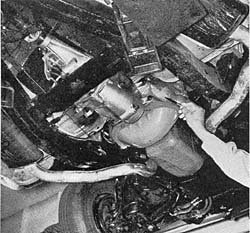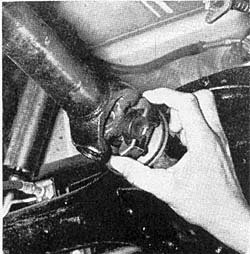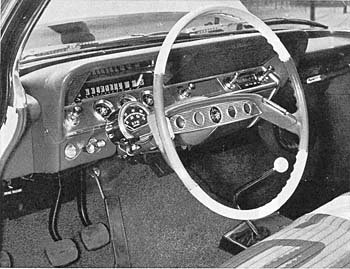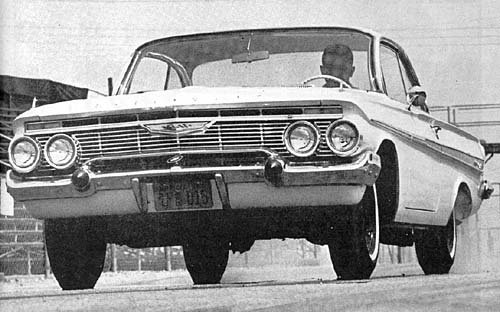Another factor, or maybe we should say lack of a feature, contributes to fuel consumption when the car is driven conservatively - the lack of a distributor diaphragm. This useful little device is left
off the distributors of many high-performance machines produced in the U.S. today because of the high cost of building a satisfactory mechanism for high-rpm operation. A diaphragm is absolutely unnecessary when an engine is operated at full throttle, whether at 1,000 or 6,000 rpm, but whenever it is running at partial throttle, the extra advance provided by this vacuum-controlled device improves efficiency.
In addition to reducing gas mileage, the absence of a diaphragm revealed another effect when the quarter-mile tests were made. Each time we took the car to the Lions Associated Drag Strip, this phase of the 'testing was preceded by 25 miles of conservative freeway driving. These partial-throttle trips would cause enough carbon, in the form of soft soot, to become deposited on the spark plug insulators so that the first couple of runs would be inferior to later efforts. This light fouling of the plugs, though it caused a pronounced high-rpm miss for one or two runs, would clear up and allow consistently good runs thereafter.
Pro drag racers avoid this difficulty with high-performance machines by either towing the car to the strip or changing plugs on arrival if the car must be driven.
Our first quarter-mile test was made with the 3.36-to-1 rear end ratio and quickly proved that it wasn't the gear for drag racing. Many bystanders thought we were mentally retarded for even making an attempt. Of course, the engine bogged down in first gear, as it did in the
low-speed testing. At the quarter-mile marker, the transmission was still in third gear, with the engine taching only 5,300 rpm. The speed at the end of the quarter was electronically timed at 94.24 mph with an, elapsed time of 15.31 seconds, despite the gearing handicap. Mickey Thompson, who manages the Lion's Drag Strip, took it through the lights a couple of times. Mickey bettered our time by one-tenth of a mile per hour and dropped the ET by .06 of a second.
|




